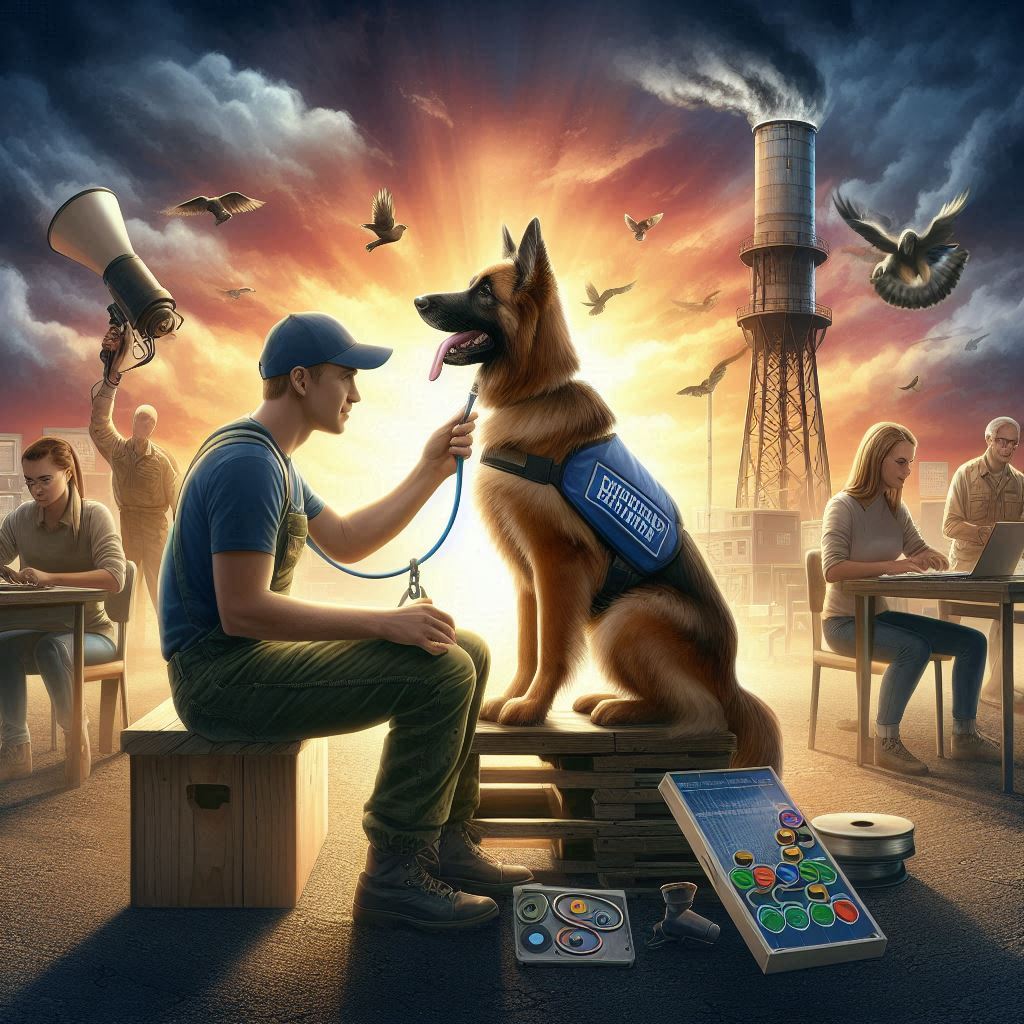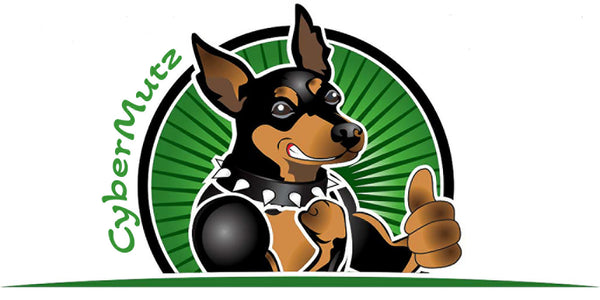
The Process of Training a Service Dog
Share
The Process of Training a Service Dog
Training a service dog is a detailed and lengthy process that involves teaching the dog specific skills to assist individuals with physical, emotional, or mental disabilities. Service dogs are highly trained to perform tasks that their handlers cannot do for themselves, improving their independence and quality of life. Below is an overview of the process involved in training a service dog, from selecting the right dog to completing training and certification.
1. Selecting the Right Dog
The first step in training a service dog is selecting the right candidate. Not every dog is suited for the task, as service dogs must possess certain traits, including:
• Temperament: The dog should be calm, patient, and social with people and other animals. A high-energy or aggressive dog is not suitable for service work.
• Size: Depending on the needs of the handler, the size of the dog may be important. Larger dogs are often chosen for mobility assistance, while smaller dogs may be suitable for psychiatric or medical alerts.
• Age: Service dog candidates are usually between 1 and 2 years old. This age ensures the dog is mature enough for training but still young enough to perform tasks for many years.
Common breeds used for service dogs include Labrador Retrievers, Golden Retrievers, and German Shepherds, though any breed with the right temperament and skills can potentially be trained for service work.
2. Basic Obedience Training
Before specialized training can begin, the dog must first master basic obedience commands. This foundation ensures the dog is responsive, focused, and well-mannered in different environments. The following basic commands are typically taught:
• Sit and Stay: These commands are essential for keeping the dog under control in public or busy environments.
• Down: A dog needs to be able to lie down calmly when needed.
• Come: The dog should reliably come when called, even in distracting situations.
• Heel: The dog must learn to walk calmly by the handler’s side without pulling on the leash.
• Leave it: This command is critical for preventing the dog from picking up dangerous or inappropriate items.
These commands help establish the dog’s behavior and make it easier for them to transition into more complex tasks later on.
3. Socialization and Exposure to Various Environments
A well-trained service dog must be comfortable in all types of environments. Socialization is a crucial step in the process, ensuring the dog is confident and calm in various settings, such as:
• Public spaces: The dog needs to be exposed to crowds, busy streets, stores, and other public places.
• Different surfaces: The dog should be comfortable walking on various surfaces, including tile, carpet, stairs, and uneven ground.
• Other animals: Service dogs must remain focused and unbothered by other dogs, cats, or wildlife they may encounter in public spaces.
• Sounds and distractions: The dog must become accustomed to loud noises, such as traffic, sirens, and other distractions, without becoming anxious or distracted.
Socialization helps ensure that the dog remains calm and focused in various settings, which is important when they accompany their handler in public.
4. Specialized Task Training
Once the dog has mastered basic obedience and is well-socialized, the next phase involves teaching the dog specific tasks to assist their handler. The tasks will vary depending on the needs of the individual and the type of service dog being trained. Some common tasks include:
• Mobility assistance: The dog may be trained to help with balance, open doors, pick up dropped items, or pull a wheelchair.
• Medical alerts: Dogs can be trained to detect medical conditions such as seizures, low blood sugar, or high blood pressure. They can alert their handler or others before a medical emergency occurs.
• Psychiatric support: Service dogs can assist individuals with anxiety, PTSD, or depression by providing comfort, grounding, or protection during episodes. They may be trained to perform tasks like deep pressure therapy (lying on the handler to calm them down), interrupting negative behaviors, or providing tactile stimulation.
• Hearing assistance: Dogs trained as hearing dogs alert individuals who are deaf or hard of hearing to important sounds, such as doorbells, alarms, or crying babies.
• Guide dog training: For individuals with visual impairments, guide dogs are trained to lead their handler safely through environments, navigate obstacles, and stop at curbs.
The training for specialized tasks is intensive and may take several months or even years to perfect. It requires patience, consistency, and repetition to ensure the dog performs the tasks reliably in real-world situations.
5. Public Access Training
Public access training is one of the most critical stages in a service dog’s development. During this phase, the dog is taught how to behave in public spaces while accompanying their handler. This training ensures that the dog can perform tasks while maintaining good manners and remaining under control in various environments. Some key elements of public access training include:
• Walking calmly on a leash: The dog should walk next to the handler without pulling or lunging.
• Good behavior in public: The dog must remain calm and well-behaved, not barking, jumping, or reacting to distractions.
• Service dog etiquette: Service dogs must not engage with other people or animals unless the handler allows it. This is to ensure that the dog remains focused on its duties and does not distract others.
• Work in different environments: The dog should be trained to work in various public settings, such as restaurants, stores, public transportation, airports, and healthcare facilities.
Public access training ensures that the dog can provide support and perform tasks in real-world scenarios without causing disruptions or distractions.
6. Ongoing Training and Maintenance
Even after the initial training is complete, ongoing maintenance is essential to ensure the service dog remains reliable and effective. This includes:
• Refresher training: Regular practice and reinforcement of commands and tasks ensure the dog stays sharp and responsive.
• Behavior monitoring: Handlers need to keep track of any behavioral changes and address them promptly to maintain the dog’s effectiveness.
• Adapting to new challenges: Over time, the handler may face new challenges, and the dog may need to adapt to different environments or tasks.
Service dogs are lifelong companions, and their training may continue throughout their working life to ensure they meet the evolving needs of their handler.
7. Certification and Legal Requirements
While there are no specific national certifications required for service dogs in many countries, some handlers choose to have their dogs certified to make it easier to access public places. In the United States, for example, the Americans with Disabilities Act (ADA) provides guidelines about service dogs’ access to public spaces. Service dog certification can sometimes be completed through a professional organization, although it is not legally required.
The ADA ensures that service dogs are allowed to accompany their handlers in all public spaces and that they are not subject to discrimination. However, the handler is responsible for ensuring their dog behaves appropriately in these environments.
Conclusion
Training a service dog is a complex, rewarding process that requires time, effort, and consistency. It involves selecting the right dog, teaching basic obedience, socializing the dog to various environments, and training them to perform specialized tasks. Public access training ensures that the dog can assist their handler in real-world scenarios, and ongoing maintenance guarantees that the dog remains effective throughout their working life.
Service dogs provide invaluable assistance to individuals with physical, emotional, or mental disabilities, greatly improving their independence and overall quality of life. The process of training these dogs is an investment in the well-being of the handler, and the result is a loyal, well-trained companion who offers support and assistance whenever needed.
CyberMutz.com (Dog-Themed Apparel & Accessories)
“CyberMutz.com – Explore a unique collection of dog-themed apparel, accessories, and gifts for pet lovers. Shop stylish, high-quality designs featuring your favorite dog breeds!” Category Page Descriptions: Dog Breed T-Shirts: “Show off your love for dogs with our exclusive breed-themed T-shirts. From German Shepherds to Chihuahuas, find high-quality, comfortable tees celebrating your favorite pup!” Dog Breed Pet Tank Tops: “Keep your furry friend stylish and comfortable with our dog breed-themed pet tank tops. Perfect for small and large dogs, these unique designs are a must-have!” Funny Dog-Themed Apparel: “Love dogs and humor? Our funny dog-themed apparel blends style with witty canine-inspired designs. Shop now for T-shirts, hoodies, and more!” Personalized Dog Merchandise: “Customize your dog lover’s gear with our personalized pet-themed apparel and accessories. Create a one-of-a-kind look for yourself or a perfect gift for a fellow dog enthusiast!”
CyberPussyKatz.com (Cat-Themed Apparel & Accessories)
“CyberPussyKatz.com – Celebrate your love for cats with our premium collection of feline-inspired apparel and accessories. Purr-fect designs for every cat lover!” Category Page Descriptions: Cat Breed T-Shirts: “Showcase your favorite feline friend with our stylish cat breed-themed T-shirts. From Maine Coons to Siamese, find the perfect tee for cat lovers!” Funny Cat-Themed Apparel: “Express your quirky side with our funny cat-themed T-shirts, hoodies, and more. Pawsome designs for those who love cats and humor!” Personalized Cat Merchandise: “Make it personal with custom cat-themed apparel and accessories. Create a unique gift or a special piece just for you!”
CyberMunkiez.com (Monkey-Themed Apparel & Accessories)
“CyberMunkiez.com – A fun collection of monkey-inspired apparel and accessories. Perfect for primate lovers who enjoy bold, playful, and unique designs!” Category Page Descriptions: Monkey-Themed T-Shirts: “Go bananas over our monkey-themed T-shirts! Whether you love capuchins, chimps, or gorillas, our designs bring out your wild side.” Funny Primate Apparel: “Add a touch of humor to your wardrobe with our hilarious monkey and ape-inspired apparel. Great for animal lovers and jungle enthusiasts!” Custom Monkey Merchandise: “Make it yours! Personalize your favorite monkey designs on T-shirts, hoodies, and more for a one-of-a-kind look.”
